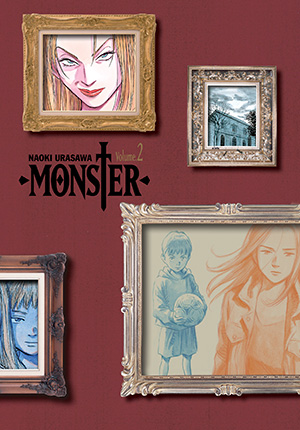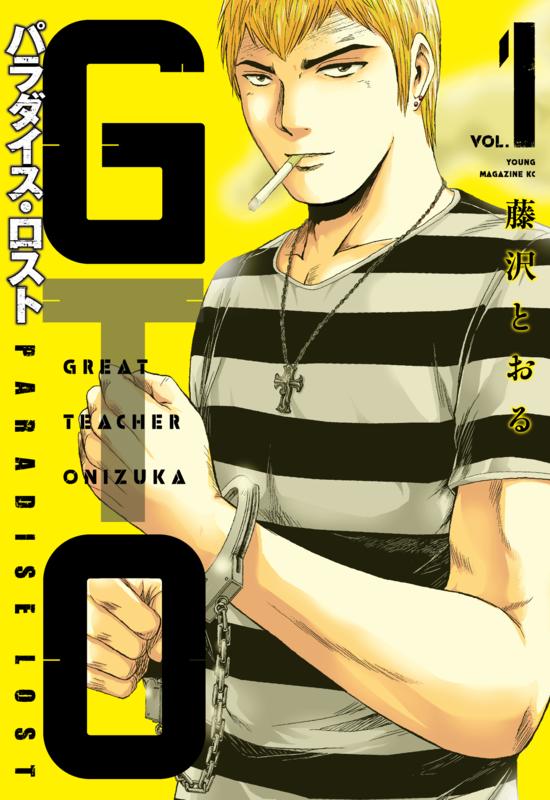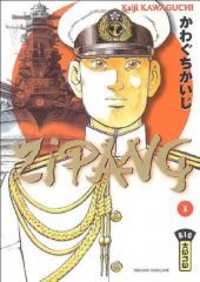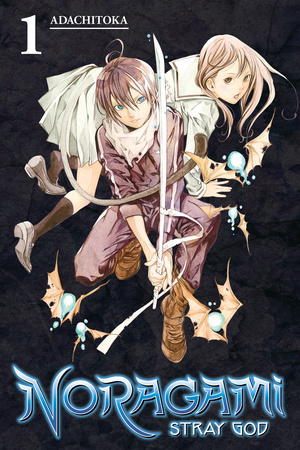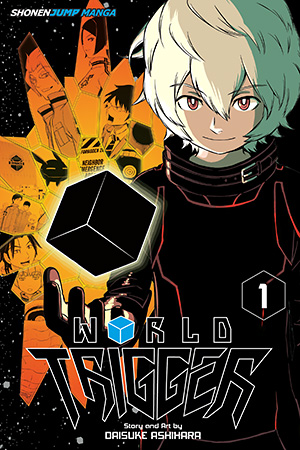Welcome to another edition of Bookmarked, our weekly feature in which Kate and I, and an invited guest, discuss what we’re reading this week. These are not formal reviews—they are more like works-in-progress, and we totally claim the right to have opinions about manga we haven’t finished yet. Our guest this week is Justin S, founder of Organization Anti-Social Geniuses. Take it away, Justin!
Justin: Last week, Deb and Kate ended up choosing My Love Story!! as titles they’ve been reading recently. Brigid chose Barakamon. Both are titles I’ve also read in the past week and probably would have chosen for this column had they not been covered already. I’m only bringing this up because I just want to say you should definitely be checking out those works as they’re both pretty great.
But I think I have a fairly solid backup to those two titles, and while it’s been finished for a while now, it still manages to chill me every time I turn the page: Monster!
For Vol 2 of the Perfect Edition of Monster, the search for cold blooded killer Johan is on for Tenma and Anna, while they both have to deal with their troubles: Tenma’s been framed for murders he didn’t commit, while Anna has to delve into the seedy backgrounds of Frankfurt and avoid getting into unnecessary trouble. During their search, the past of Johan—how he got himself into the situations he did as a child, the people involved with him, his true personality, or personalities—are uncovered, and this discovery only leads the two to conclude one thing: They must stop him, at any cost.
Monster is always going to be a weird beast for me. I’ve read this story a couple of times, yet each and every time I read it again, it feels like something new happens and I’m taken aback. In this omnibus format, the experience of seeing seemingly minor characters like Heckel the thief and Schumann the doctor (who lives in a remote area) and how they influence the story this time around is exciting and fresh! Yeah, we know who the story really revolves around and those guys ultimately are the focus, but I find that in re-reading some works, sometimes the other things, like the supporting characters, take your attention that makes you appreciate the ongoing journey. In this case for example, just seeing a regular nurse treat a kid that Tenma, who is wanted for murder, gives to her and has to leave for some time, and then watch her give the kid to someone else—that someone else happened to be abusing the kid—even though rationally, she is supposed to give the kid up because he’s the guardian and has no knowledge of how he’s been treated, makes me angry. Predictable, probably, but being predictable can be a good thing if everything else is set up properly. That is one of the reasons Monster still continues to be so great even despite time passing by, and I can only thank Viz enough for re-releasing it in this brand new version.
Another manga that’s gotten my attention is on Crunchyroll. It has something to do with “delinquent, former gang leader” “Teacher” and “immature schoolkids with a host of problems.”
That practically sums up Fujisawa’s latest GTO iteration, Paradise Lost. As the sequel to GTO, it’s still grounded in the same roots that’s made the series popular: Onizuka is not the normal teacher, most of his co-workers are out to get him fired, and he has to deal with problem kids… that also are out to get him fired. This time however, he has to deal with students who are also idols, which means they bring their stardom (and their fans), along with their sense of superiority and arrogance, to the classroom. Needless to say, Onizuka doesn’t stand for that, especially if that means treating the lesser classmates that may not be stars but have an importance nonetheless, like trash.
I knew going in that I was probably going to like this new version of Onizuka, but I’m surprised I like it as much as I do. It’s still the same as all the others, but the angle of working with a former model, teaching a bunch of kids that are destined to be famous, and seeing how he does it considering how they act inside and outside of school has been neat. It’s gotten pretty crazy recently with one idol who can’t stand Onizuka, to the point where he decided it’d be cool to let one of his stalker fans kill Onizuka. But as always, Onizuka finds a way to survive it, though whether he’ll have success teaching him a lesson…well, he probably will eventually, but it’s still too early to say. Anyways, while the art still remains somewhat of a distraction, this is still classic GTO, and hard to turn down.
Well, the art does have its good moments.
Kate: I had a similar experience re-reading Monster this summer: I found myself more interested in the subplots and supporting characters than in Tenma’s quest to find Johann. I often feel like Urasawa does his best work on the periphery of the main story, populating it with memorable people who feel truer-to-life than his lead characters. He also does a better job of wrapping up these brief story arcs; much as I love Monster, Pluto, and 20th Century Boys, Urasawa can’t end a series to save his life.
Speaking of older gems, I’ve been reading the first volumes of Kaiji Kawaguchi’s time-traveling thriller Zipang. Kodansha published a bilingual edition in 2002, and while they didn’t translate the whole series, it’s still a good read. The premise is uncannily similar to The Final Countdown (1980), a cheesy Martin Sheen-Kirk Doulgas flick in which an American aircraft carrier is accidentally transported back to 1941. The crew then must decide whether to use their superior weaponry to thwart the bombing of Pearl Harbor or allow history to follow its textbook course. Zipang tells a similar story from a Japanese perspective: the crew members of the Mirai, a state-of-the-art destroyer, find themselves deposited in the Pacific theater on the eve of Midway. You can guess what happens next: characters debate the ethics of altering the space-time continuum while engaging in some good old-fashioned sea battles. This time-traveling gimmick has been done to death, but I have a terrible fondness for hyper-serious manly-man manga, especially when the pacing and artwork are as crisp as Kawaguchi’s. I’m disappointed that I won’t be able to read the whole series–at 43 volumes, it’s easy to guess why no American publisher would touch it—but can’t help but wish that Crunchyroll would license it.
Brigid: I also have been reading My Love Story!!, and I especially enjoy the art and the way that Aruko uses patterns and screentones to express emotion—every time Yamato does something that Takeo finds unspeakably cute, his profile is filled with streaks of lightning. It’s totally over the top, but that’s what makes it so funny.
I’ll weigh in on Monster as well: I agree with Kate about Urasawa’s endings. The end of Monster made me want to throw the book across the room. It’s a shame, because Urasawa is a master storyteller, and I love following all the story threads, so it’s disappointing when the series just goes “pfft” at the end.
I started a couple of promising series this week. One was Noragami, a comedy about a homeless god, Yato, who makes up in attitude for what he lacks in tact. The book begins with Yato somewhat reluctantly helping a bullied girl—as so often happens in manga, the chief culprits are not her jerky schoolmates but supernatural creatures called ayakashi. Yato slashes them to ribbons with the help of his shinki (“divine weapon”), a girl who becomes a knife at his command, but then his shinki leaves. Perhaps this is one of those manga that started as a one-shot chapter in a magazine, because this first chapter stands completely apart from the rest of the story.
What happens next is a bit confusing: A girl named Hiyori is hit by a bus and almost dies, or has some sort of near-death experience, and while she seems to have recovered, she keeps slipping out of her body. She attaches herself to Yato, and it looks like maybe she will become his new shinki, but noooo, some other dude shows up at the end. So I’m not sure where the Hiyori thing is going. There’s plenty to like about this book anyway, though, with lots of humor in this book (including the fact that Hiyori is a closet wrestling fan) and just enough action. Adachitoka lays on the screentones with a heavy hand (and not as skillfully as Aruko), which makes the art hard to look at sometimes, but the characters themselves are well drawn and well defined. I’ll be on board for at least one more volume of this one. Bonus points for the extensive translation notes in the back!
I thought that World Trigger might be something special, as Viz released the first two volumes at once, but it seems pretty average. It’s your basic Shonen Jump story about teenagers protecting the world (or in this case, Mikado City) from invaders from outer space, the Neighbors. The group of protectors is called Border, and they have the usual tightly fitted uniforms and cool weapons (they get a special battling body when they fight, which minimizes damage to the actual body). There are a couple of twists in the book: The main character, Osamu Mikumo, is a low-level trainee who isn’t much of a fighter. However, he is a very ethical guy who won’t allow a classmate to be bullied or allow one of the bullies to be eaten by a space monster that pops up out of nowhere. The bullied classmate is the new kid in town, who seems a bit more clueless than he ought to be. It’s hard to say more without giving the plot away, but there is a bit more to it than your average fighting-the-monsters story. If you like a book with a lot of battles, this is one to try, but by the beginning of volume 2, I had had enough.
